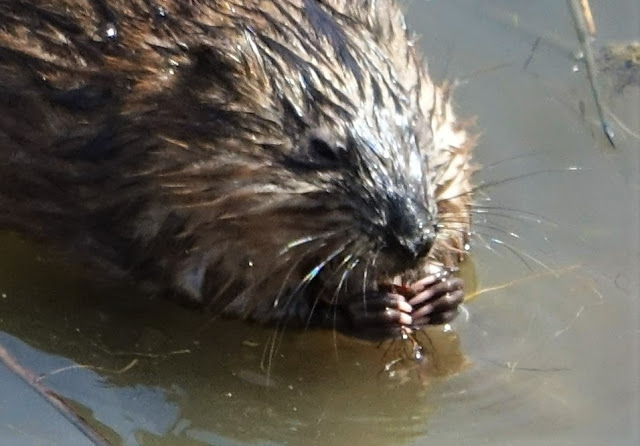 |
| Daffodil (left) besides young Lysimachia leaves |
Lowland Yellow Loosestrife Lysimachia hybdrida, a perennial native plant, is sprouting again near the pond. The stems will to grow to 30-40 inches tall, then flowers will appear in June. Some specialist bees will gather the oils that the flower produces to mix with pollen as food for its offspring.
















